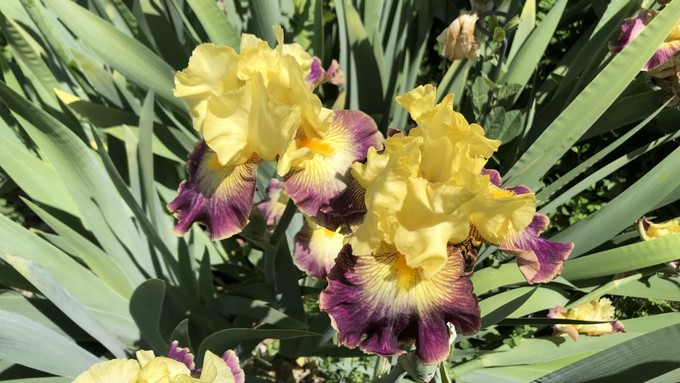
'In the Garden' is theme for annual show and sale

See tall bearded irises like this beauty and other varieties as well at the Sacramento Iris Society Show and Sale. Kathy Morrison
See a rainbow of colorful irises this weekend when the Sacramento Iris Society hosts its annual show and sale.
Shepard Garden and Arts Center in McKinley Park will be filled with bearded irises and other species at their peak of bloom. With the theme “In the Garden,” the iris show will be open to the public from 1 to 5 p.m. Saturday, April 15, and 10 a.m. to 3 p.m. Sunday, April 16. Admission and parking are free.
This will be a judged show with many different varieties and kinds of irises vying for awards. It’s a great opportunity to learn about the many different color combinations and how to better identify varieties.
And there are a lot of varieties! Bearded irises (also known as flags) now include more than 60,000 named cultivars and come in every color from pure white to black with countless shades in between. The most common colors are blues and purples, closest to the iris family’s native hues. Thousands of varieties feature unusual combinations of hues on standards (the upright petals), falls (the down-pointing petals) and beards (the fuzzy flower parts that give these irises their nickname).
Take some irises home, too! The club will offer potted irises for sale with plants ready to transplant now.
Bearded iris, the most common perennial iris, is a water-wise wonder that thrives in Sacramento. After showy spring blooms, bearded irises need little summer irrigation – just once a week or twice a month. The plant dies back in August before sprouting new growth in late fall or winter.
Shepard Center is located at 3330 McKinley Blvd., Sacramento.
Details and directions: www.sgaac.org or https://sacramentoirissocietydotcom.wordpress.com/.
-- Debbie Arrington
Comments
0 comments have been posted.Sacramento Digs Gardening to your inbox.
Sites We Like
Garden Checklist for week of July 21
Your garden needs you!
* Keep your vegetable garden watered, mulched and weeded. Water before 8 a.m. to reduce the chance of fungal infection and to conserve moisture.
* Feed vegetable plants bone meal, rock phosphate or other fertilizers high in phosphate to stimulate more blooms and fruiting. (But wait until daily high temperatures drop out of the 100s.)
* Don’t let tomatoes wilt or dry out completely. Give tomatoes a deep watering two to three times a week.
* Harvest vegetables promptly to encourage plants to produce more. Squash especially tends to grow rapidly in hot weather. Keep an eye on zucchini.
* Pinch back chrysanthemums for bushy plants and more flowers in September.
* Remove spent flowers from roses, daylilies and other bloomers as they finish flowering.
* Pinch off blooms from basil so the plant will grow more leaves.
* Cut back lavender after flowering to promote a second bloom.
* It's not too late to add a splash of color. Plant petunias, snapdragons, zinnias and marigolds.
* From seed, plant corn, pumpkins, radishes, winter squash and sunflowers.